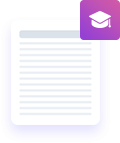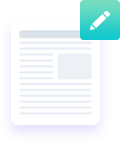Week 6 Final Project
Creative Teaching: Designing Creative and Culturally Relevant Instruction
For this final project, you will be a classroom teacher developing a creative and culturally relevant idea, concept, or movement for your school. Think about everything you have seen, heard, discussed, shared, and viewed over the past five weeks. What information stuck out as something you would want to implement in your school or classroom? Was there an idea that you wished you could share with your colleagues? What ideas did you discover that will help your students with being creative while also being culturally relevant? You are going to create a proposal for an idea that you would like to implement in your school. Think about to whom you would need to propose this idea? Your administrator? Colleague? PLC team? For a few more ideas to brainstorm, view this Association of School and Curriculum DevelopmentLinks to an external site. (ASCD) video.
Your presentation can be formatted in a way that is appropriate to your style of presentation. You can write an essay, create a PPT with a voiceover, record a presentation with an accompanying outline (with citations and resources), or use one of the other ideas presented during this course. Included in your presentation/proposal should be the following:
Content Expectations
Part I: Audience and Rationale (2 points): Write an overview of the class/school/target population, including age ranges, grade(s), subject area(s), and relevant micro and macro cultural components. If you are not currently teaching, you may use a prior class, a colleague’s class, or invent demographic information.
Part II: Outcomes (3 points): List the objectives of the instructional experience/idea/concept being proposed.
Content or Classroom Objectives
21st Century skills (emphasis on creativity)
Cultural competencies to be explicitly addressed with the experience/idea/concept
Part III: Context/Instructional Description (3 points): Describe more specifically how the instructional experience/idea/or concept will be used in order to meet the Outcomes (listed above). Will it include:
Creativity – How will creativity be encouraged?
Problem solving – Will the activity focus on solving a problem?
AND/OR
Simulation – Will the students be involved with performing tasks that related to a real-world experience or activity?
Part IV: Culturally Relevant Pedagogy (8 points). Describe how and which four (at least) of these will be included in the experience/idea/concept?
Maximizing academic success through relevant instructional experiences
Addressing cultural competence through reinforcing students’ cultural integrity
Involving students in the construction of knowledge
Building on students’ interests and linguistic resources
Tapping home and community resources
Understanding students’ cultural knowledge
Using interactive and constructivist teaching strategies
Examining the experience/idea/concept from multiple perspectives
Promoting critical consciousness through opportunities to challenge predominant elements of students’ social norms
Part V: Creativity/Innovation Strategies (8 points). Describe how and which four (at least) of these will be included in the experience/idea/concept?
Encouraging students to believe in their culture-influenced creative potential
Nurturing the confidence to try
Helping learners find their creative strengths
Promoting experiment and inquiry and a willingness to make mistakes
Encouraging generative thought, free from immediate criticism
Encouraging the expression of personal ideas and feelings
Conveying an understanding of phases in creative work and the need for time
Developing an awareness of the roles of intuition and aesthetic processes
Encouraging students to play with ideas and conjecture about possibilities
Facilitating critical evaluation of ideas
Written Communication Expectations
Page Requirement (.25 points): The length of the final project will depend on the medium you choose; however, some general guidelines would be 8-10 pages (for a paper) or 8-10 slides (for a presentation), not including the title and reference pages.
APA Formatting (.25 points): Format your paper according to APA style as outlined in the Ashford Writing Center.
Syntax and Mechanics (.25 points): Display meticulous comprehension and organization of syntax and mechanics, such as spelling and grammar.
Resource Requirement (.25 points): Reference three scholarly sources in addition to the course textbooks, providing compelling evidence to support ideas. All sources on the references page need to be used and cited correctly within the body of the assignment.
Next Steps: Review and Submit the Final Project
Review your assignment with the Grading Rubric to be sure you have achieved the distinguished levels of performance for each criterion. Next, submit the assignment for evaluation no later than Day 7.
If you are enrolled in the MAED Program, it is imperative that you keep copies of all assignments completed in this course. You will return to them for the portfolio that you will create in your final MAED course. This portfolio is a culminating project that will demonstrate that you have met program outcomes.
Instructor Guidance
Week 6
Week Overview
Beatrice Coron is a woman who traveled the path of trying to find her way in art through many professions.
Colon’s message supports earlier ideas communicated in the work of Ken Robinson, Blue Man Group and Elad Segev (through his When There is a Correct Answer research). We all have creative potential. We all possess attributes and skills that can be used in the process of “…having original ideas that have value” (Robinson, 2011, p. 151). Before you dive headfirst into the Final Project, you are asked to share one final reflection about something creative about yourself. A simple deconstruction of the experiences that contributed to your creative “expertise” will likely reinforce and affirm all the skills and strategies presented within this course.
Intellectual Elaboration
This week, you are asked to reflect on the learning of skills that contribute to your ability to be creative in a specific way. Keep in mind that creativity can be expressed in many different ways. One handy way to consider the myriad of creativity possibilities is to use Howard Gardner’s Multiple Intelligences theoretical framework (Gardner, 1999). This theory describes a number of different types of “intelligences,” people might possess. The general categories of intelligences can be readily applied to creativity, describing a simple “Multiple Creativities” framework:
Musical–rhythmic and harmonic
This category of creativity might include such forms of expression as singing, playing instruments, and writing music
Visual–spatial
This category of creativity might include such forms of expression as drawing, planning, painting, and designing spaces and structures.
Verbal–linguistic
This category of creativity might include such forms of expression as writing, storytelling or delivering lines as an actor.
Logical–mathematical
This category of creativity might include such forms of expression as problem-solving or manipulating numbers and amounts of things.
Bodily–kinesthetic
This category of creativity might include such forms of expression as sports, dance, yoga, spiritual movement, physical acting, and even knitting.
Interpersonal
This category of creativity might include such forms of expression as talking with strangers, making people laugh, making people feel comfortable or calm, and cooperating constructively with many different types of people.
Naturalistic
This category of creativity might include such forms of expression as nurturing other people or animals, gardening, even camping.
Hopefully there is something within this listing that will help you identify an area of creativity on which you can reflect. The reflections facilitated in this final discussion can be useful in helping you take the first steps in considering types of experiences you might want to design in the final project.
Following this reflection, you are asked to apply nearly all the skills acquired in this course to the creation of the proposal of a new program, idea, or concept to either an administrative team or a team of colleagues in order to implement an innovative idea that will highlight culturally and creatively relevant instructional experiences. . In this proposal, you will detail plans to develop learning experiences that promote 21st century skills (creativity and innovation skills in particular) within a culturally relevant framework. The experiences you design will incorporate the strategies for promoting creativity within technology-supported project-based or problem-based scenarios.
Discussion Response Expectations
The final discussion post this week is a personal reflection over factors that influenced and affected your ability to learn the skills needed for you to be able to express your creativity. In this reflection, you are asked to describe a set of skills you acquired over the years that allows you to be creative in some way. This might be musical skills, cooking, knitting, writing, model-building, gardening….anything you consider yourself “good at” that encourages you to experience “…the process of having original ideas that have value” (Robinson, 2011, p. 151). By analyzing these skills in light of the culturally relevant context in which they were learned, you may realize an even deeper understanding of the skills facilitated within this course.
Assignment Expectations
For the final project, you will assume the role of a classroom teacher proposing a new program, idea, or concept to either an administrative team or a team of colleagues in order to implement an innovative idea that will highlight culturally and creatively relevant instructional experiences.
We have reviewed a plethora of innovative programs and projects throughout this course. Perhaps you want to add a Maker-SpaceLinks to an external site. to your classroom or library? Maybe you want to begin a Skills USA Links to an external site.group? Or, maybe you want to add an in-residence artist at your school? Whatever the innovative idea is for your district/school/classroom, think about how you will meet the cultural, creative, and innovative needs of your students.
If you are enrolled in the MAED Program, it is imperative that you keep copies of all assignments completed in this course. You will return to them for the portfolio that you will create in your final MAED course. This portfolio is a culminating project that will demonstrate that you have met program outcomes.
References
Gardner, H. (1999). Intelligence reframed: Multiple intelligences for the 21st century. New York: Basic Books.
Robinson, K. (2011). Out of our minds: Learning to be creative. Oxford: Capstone.
TEDx Talks. (2013, September 9). Everyone is an ArtistLinks to an external site. [Video file]. Retrieved from https://www.youtube.com/watch?v=NIXFOixZF8s
Required Resources
Multimedia
Coron, B. (2011, March 11). Beatrice Coron: Stories cut from paperLinks to an external site. [Video file]. Retrieved from http://www.ted.com/talks/beatrice_coron_stories_cut_from_paper
This video provides information about Beatrice Coron and her art and will assist you in the Discussions and Assignment this week.
Recommended Resources
Text
Robinson, K. (2011). Out of our minds: Learning to be creative. United Kingdom: Capstone Publishing Ltd.
This book provides information about how to promote creativity in the 21st century and could assist you in your Final Assignment this week.















